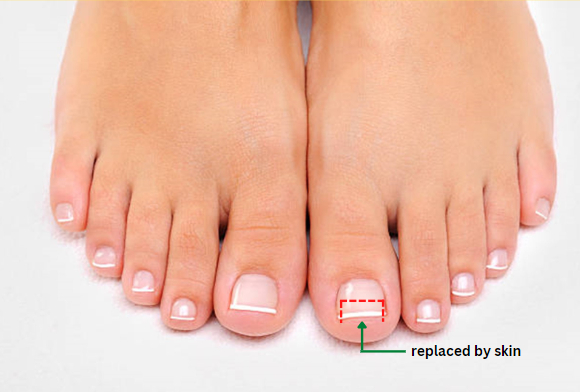Disappearing Nail Bed Syndrome
Disappearing nail bed (DNB) is the result of long standing onycholysis which is characterized by a narrowed or shortened nail bed. It is 20% shorter than the bilateral nail. This condition can happen in fingernails and toenails. Long standing onycholysis can be the reason of epithelialization to occur and also dermatoglyphics to appear.
What can cause Disappearing Nail Bed Syndrome?
- Onychomycosis
- Onychogryphosis
- Trauma (blunt force or repetitive)
- Nail Surgery (ie iatrogenic)
- Biomechanics (ie hallux extensus)
- Other disorders that cause nail onycholysis: ie medications, psoriasis, lichen planus
Normal nail bed lacks a granular layer of the epithelium and is 2-3 layers thick with a hearty vascular and also nerve supply. The nail plate is the “stratum corneum” layer for the nail bed. As it grows forward, nail plate slides over the nail bed. There is a thin attachment called the bed epithelium. Moreover, nail bed with no nail plate covering it seems to have digital fingerprint memory—ie the nail bed becomes like the distal tip of your toe. The nail plate can no longer then slide across the nail bed. The distal pulp of toe deforms, creating a physical barrier for the nail to grow forward. Unknown how long onycholysis needs to be existing for this to occur. A grossly atrophied nail matrix was noticed upon removal of these nails.
Are you suffering from this condition or other foot problems? At The Chelsea Clinic, we can help. One of our podiatrist can assist and then recommend what treatments are best to get you back on track. 
Schedule an appointment here or you may call us at 44 (0) 207 101 4000. 
We hope you have a feetastic day! 

-The Chelsea Clinic and Team








